UC Gardening Blogs
Foraging Bumble Bees: Check Out the Orange Pollen
Bring on the bumble bees! In yesterday's Bug Squad blog, we mentioned the unusual...
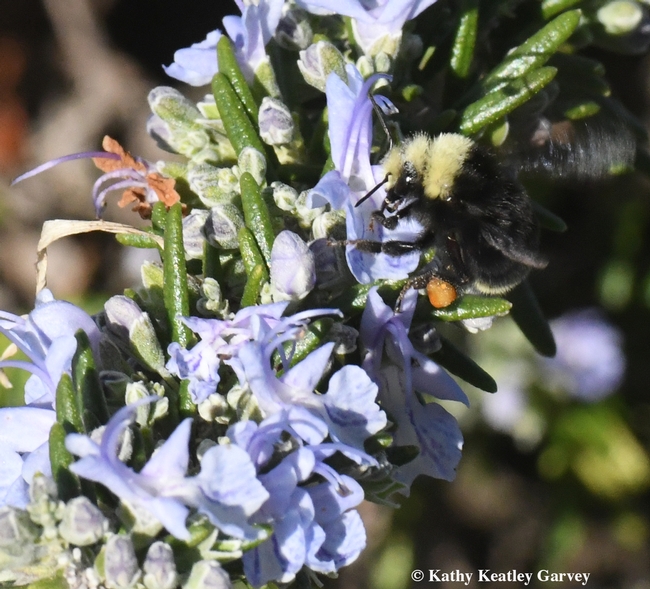
A yellow-faced bumble bees, Bombus vosnesenskii, nectaring on rosemary at the Benicia Marina on New Year's Day, 2018. Note the orange pollen, derived from another floral species, probably California golden poppies. (Photo by Kathy Keatley Garvey)
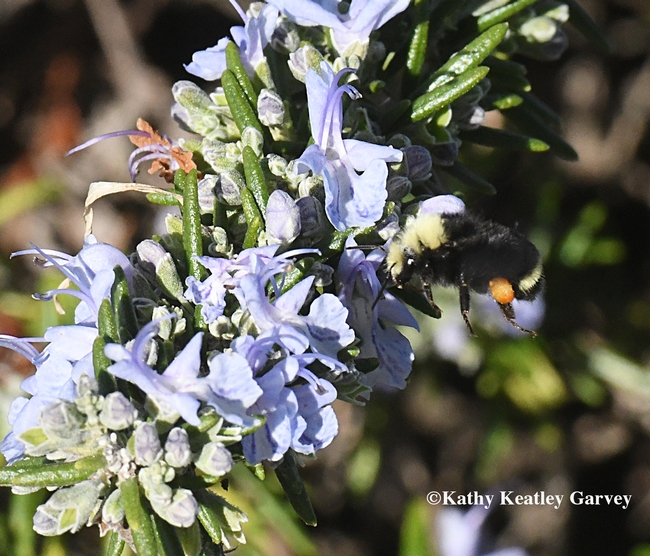
The yellow-faced bumble bee, Bombus vosnesenskii, heads for another rosemary blossom at the Benicia Marina. (Photo by Kathy Keatley Garvey)
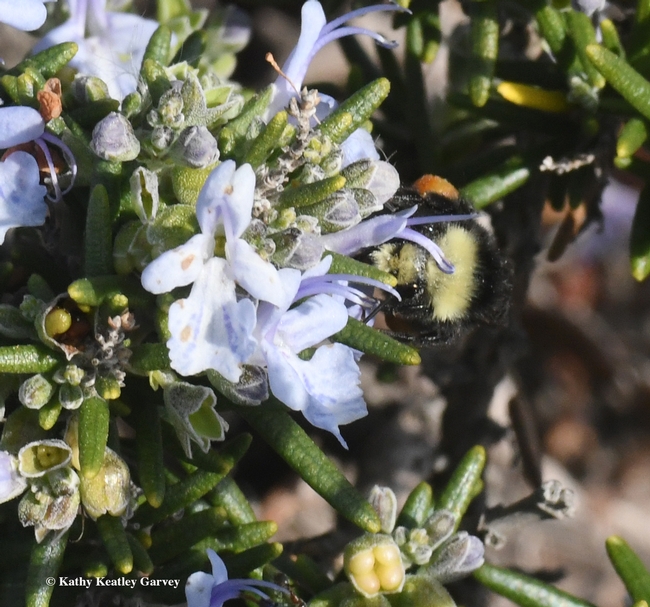
Peek-a-bee! The foraging bumble bee, Bombus vosnesenskii, displays a little of its orange pollen. (Photo by Kathy Keatley Garvey)
Rodenticides: Use, Issues, and Nontarget Exposure
[From the Winter 2017 issue of the UC IPM Green Bulletin] Rodenticides are essential tools in...
Black Knot Disease
Many years ago my dad planted a Santa Rosa plum in his backyard in Modesto. Every year it abundantly produced delectably sweet, juicy yellow plums, that we all enjoyed. This summer, however, he was only able to find about a dozen to pick. He took a good look at the tree and started his online search for pictures that appeared to be what was wrong with his tree. His conclusion is that his beautiful tree has Black Knot Disease. The cause is a fungus called Apiosporina morbosa also known as Dibotryon morbosum. It attacks trees and shrubs in the Prunus family - plums, chokecherries and some cherries, not so much peaches or apricots. There are cultivars that are resistant or at least not as susceptible. Santa Rosa plums are listed in this category.
Black Knot Disease is most commonly detected in winter, when the leaves have fallen from the tree. The disease first appears as soft, green growths on twigs and branches at sites of leaf attachment. These turn brown, harden and enlarge eventually turning black. By this time, the tumor is often large enough to encircle the twig or limb causing it to die. Old knots can also be attacked by boring insects or by the fungal parasite Trichothecium roseum, which can cause the black knot to turn white or even pink.
The disease does not occur in one season. The fungus spends the winter in knots or weakened areas around the knots on the tree's branches or twigs. Come spring, spores are produced on the knot's surface in sacs. When rain arrives, the spores are shot into the air and carried by the wind to twigs of the new season's growth. If the twig stays wet for a long enough period, the spores germinate and infect the twig. The new green twigs are the only part of the tree susceptible to infection by this spore. The fungus grows during the cool weather in the infected wood enlarging each year. When it is finally noticed, the treatment is to cut the branch 6 to 8 inches below the knot, disinfecting the tool between cuts. This is usually done in the spring. Even with removing what is noticeable, it can take another year or two to effectively cut off all the diseased areas. What has been cut off should be removed from the area, and not dumped in the green can. The spores on the prunings can survive for several weeks. Fungicides are not cures on their own, so they are not recommended.
This fungus is native to North America, but it is most often seen in the Northeast. It is also commonly found in the South and Southeast and in the Midwest. How it got to my dad's tree in Modesto is any one's guess. What is not a guess - this tree is a goner. One of the tumors has almost encircled the trunk. My dad plans to have his beautiful tree cut down soon.
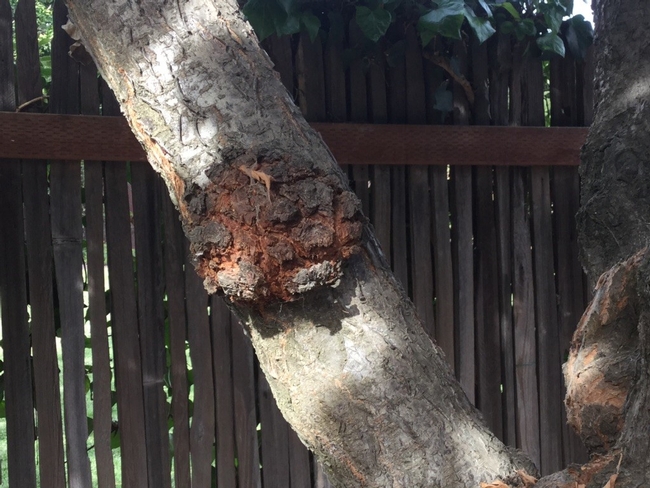
photos by Michelle Davis

black knot 2
Celebrating the New Year with Bumble Bees in Benicia
While folks from Alaska to Colorado to New York to Maine are shivering in freezing temperatures,...
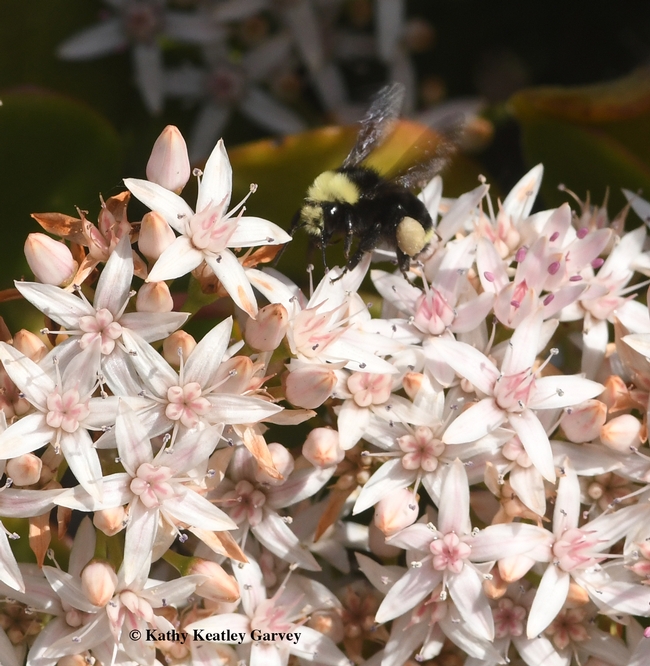
A yellow-faced bumble bee, Bombus vosnesenskii, forages on New Year's Day, 2017, on jade at the Benicia Capitol State Historic Park. (Photo by Kathy Keatley Garvey)
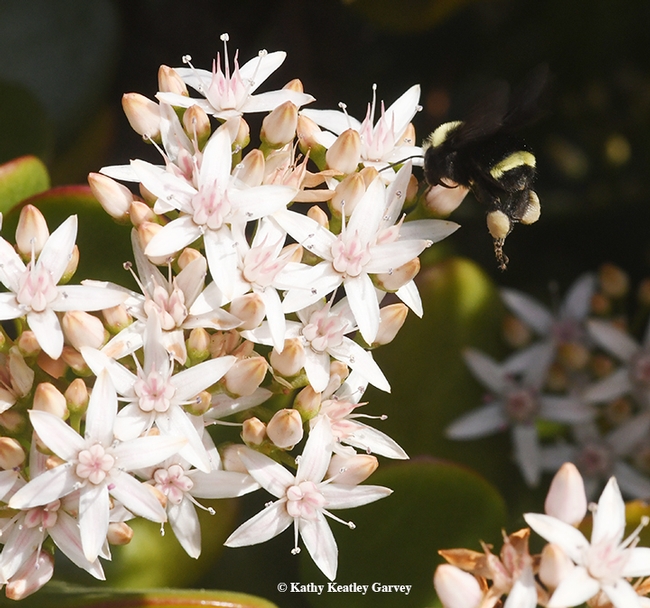
Check out the cream-colored pollen on this yellow-faced bumble bees, Bombus vosnesenskii, nectaring today (Jan. 1) on jade at the Benicia Capitol State Historic Park. (Photo by Kathy Keatley Garvey)
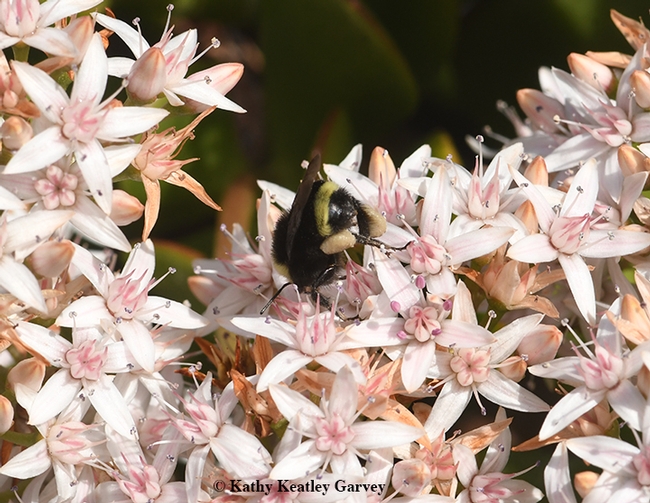
Bottoms up! A yellow-faced bumble bee, Bombus vosnesenskii, dips for nectar on a jade blossom in Benicia. (Photo by Kathy Keatley Garvey)
The Gardens at the Tusayan Ruins in Grand Canyon National Park, Arizona

photos by Betty Homer
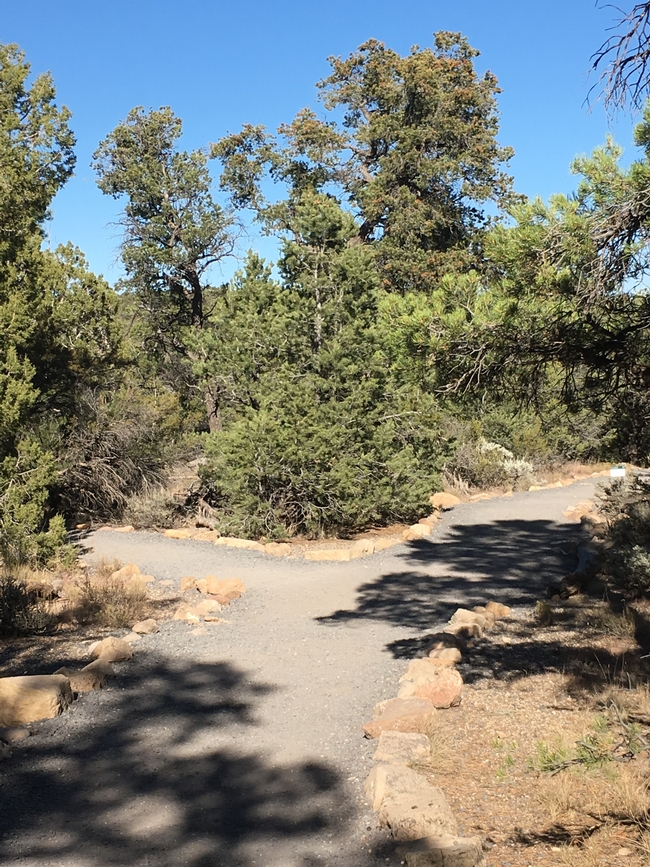
IMG 2862
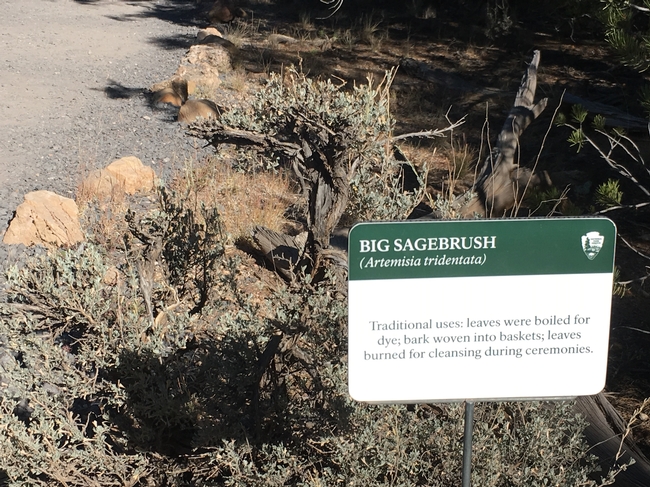
IMG 2864
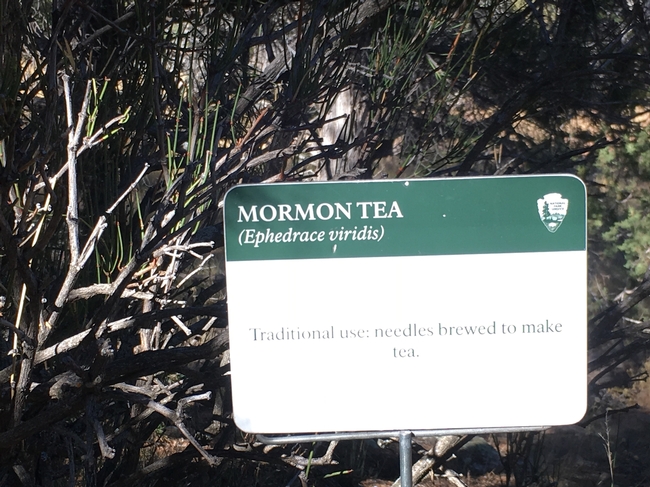
IMG 2869
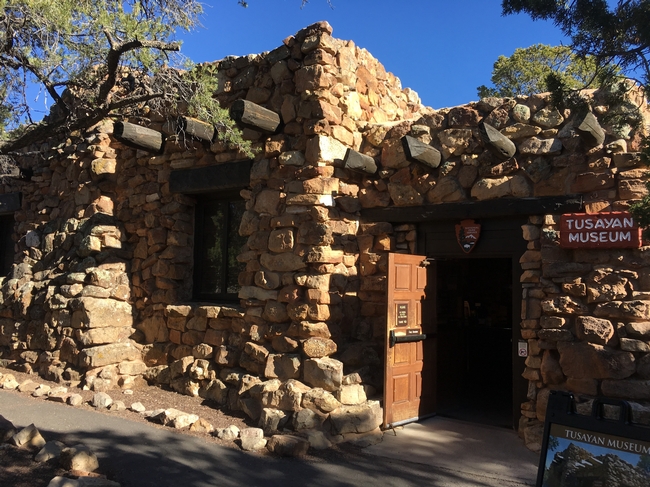
IMG 2873



